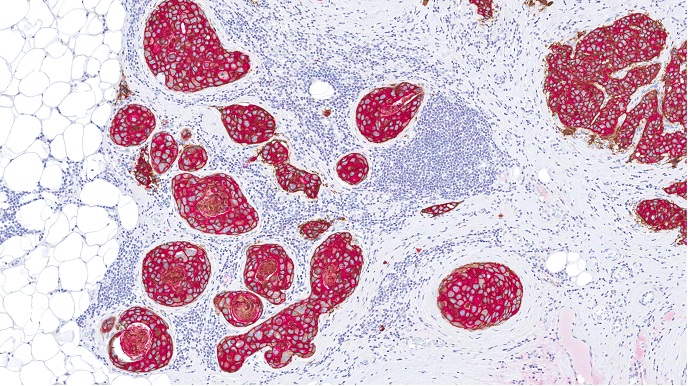A minimally-invasive prognostic device for breast cancer
Ever since its use was first reported in 1992, surgical sentinel lymph node biopsy (SLNB) has become the undisputed method for breast cancer prognosis. Steady improvements in survival rates have been observed over the past few decades, and the over 90 % accuracy of SLNB in defining cancer stages and predicting treatment outcomes certainly played an important part in this positive evolution. The technique, however, is not without its downsides. As Dr Francesc Mitjans, Director of Health and Biomedicine at Leitat, puts it: “There is a real, unmet clinical need for a more reliable and less invasive prognostic alternative, both for the patients themselves and for health practitioners.” SLNB is indeed highly invasive. It can also feel over the top with its 70 % negative results and the wasted resources that come with it. With each unnecessary SLNB taking place, the health system loses up to EUR 15 000, and that’s not even counting the 4 days the patient spends at the hospital. In fact, this is just the tip of the iceberg. Some patients have exhibited allergic reactions to the injected dye or have seen damaged lymphatic vessels swell and eventually cause lymphatic oedema. Moreover, results delivery can take up to 2 weeks and, in 5 to 10 % of cases, turn out to be false negatives. “HypoSens set out to provide patients, surgeons and oncologists with an innovative prognostic system that addresses these shortcomings,” Dr Mitjans says.
Faster, better and less painful prognostic alternatives
The HypoSens (Nano-confined photonic system for detection of breast cancer spread to the lymph nodes) project’s imaging system combines the use of specific anti-HER2 antibodies to target cancer cells with dual parameter (local Tº C and O2) nanosensors. It also encompasses an external non-invasive near-infrared (NIR) probe device which can register signals through the skin using the wavefront shaping concept. The latter processes data collected by injected nanosensors that target the tumour, and overcomes the current limits of imaging through highly scattering tissue. “Our system will offer faster, better and less painful prognostic alternatives to breast cancer patients, as no surgery is required,” Dr Mitjans explains. “The ability to provide final prognostic results immediately will also save patients the anxiety caused by current options.” The project consortium has already obtained the ethical clearances required to conduct studies on animals and clinical samples. They have drafted a business plan for the future commercialisation of the technology, which foresees an upgrade from lab scale to commercial production. “Our business plan identifies which components need to be modified for successful commercialisation and maps a way forward for needful modifications. We have already set up various strategies to catch the attention of the public, investors, the medical research sector, academia, SMEs and cancer associations,” Dr Mitjans points out.
Future plans to reach the market
The team is working hard to bring the device to patients in the near future. “We are planning for a 6-month-long trial targeting up to 400 patients with HER2-positive breast cancer across Europe, to compare pathology data with data gathered by HypoSens. We also have to seek formal CE certification and FDA approval. To ensure widespread production, we plan to license the technology to industry-leading medical device manufacturers in Europe,” Dr Mitjans says. Although the HypoSens system was initially meant to focus on breast cancer, the team is now considering its use for the diagnosis and prognostic of other metastatic cancers. These include vulval, colorectal and gastric cancers, as well as pelvic and renal tumours via the use of other tumour-targeting moieties.







